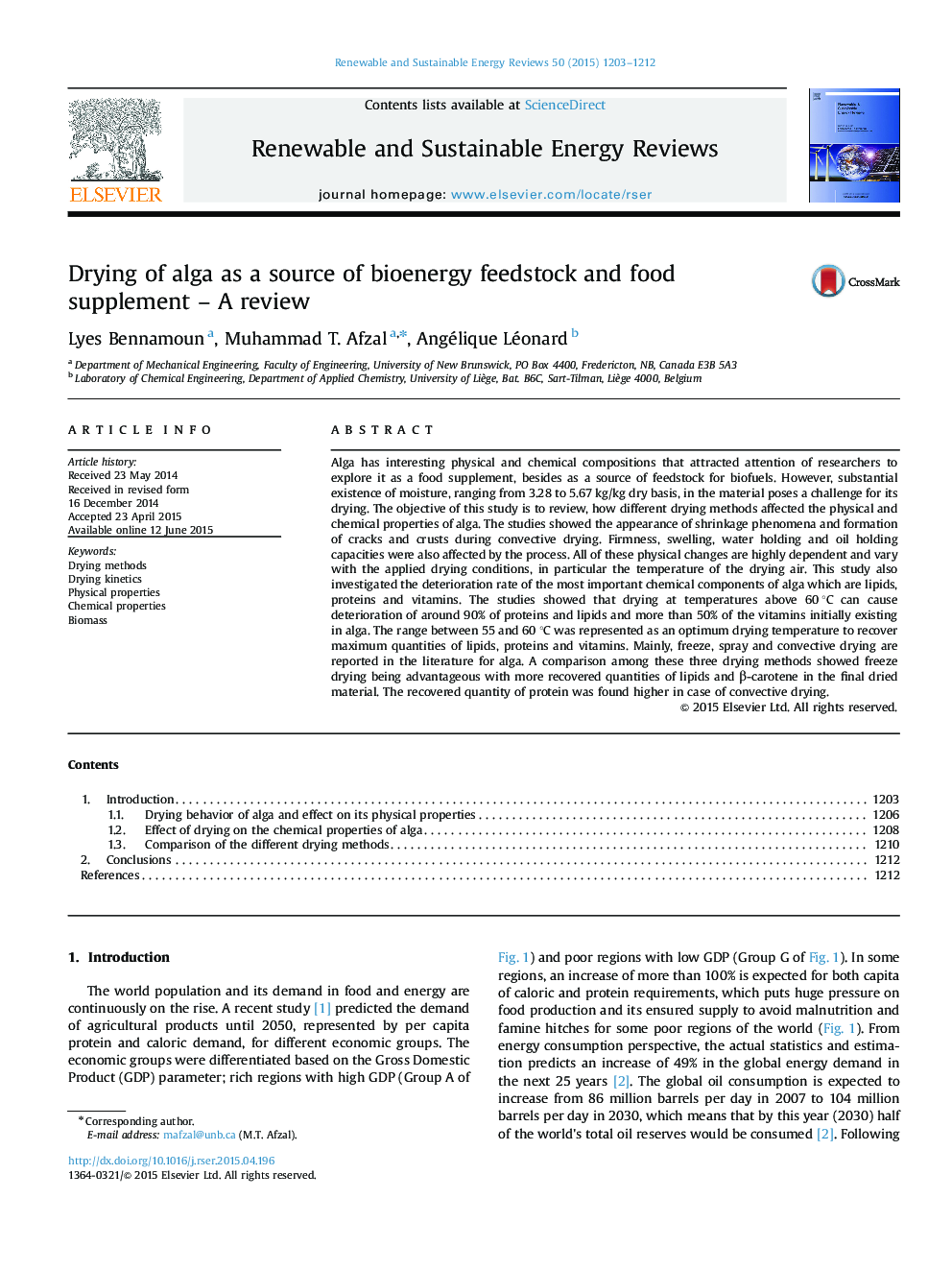| Article ID | Journal | Published Year | Pages | File Type |
|---|---|---|---|---|
| 8116357 | Renewable and Sustainable Energy Reviews | 2015 | 10 Pages |
Abstract
Alga has interesting physical and chemical compositions that attracted attention of researchers to explore it as a food supplement, besides as a source of feedstock for biofuels. However, substantial existence of moisture, ranging from 3.28 to 5.67 kg/kg dry basis, in the material poses a challenge for its drying. The objective of this study is to review, how different drying methods affected the physical and chemical properties of alga. The studies showed the appearance of shrinkage phenomena and formation of cracks and crusts during convective drying. Firmness, swelling, water holding and oil holding capacities were also affected by the process. All of these physical changes are highly dependent and vary with the applied drying conditions, in particular the temperature of the drying air. This study also investigated the deterioration rate of the most important chemical components of alga which are lipids, proteins and vitamins. The studies showed that drying at temperatures above 60 °C can cause deterioration of around 90% of proteins and lipids and more than 50% of the vitamins initially existing in alga. The range between 55 and 60 °C was represented as an optimum drying temperature to recover maximum quantities of lipids, proteins and vitamins. Mainly, freeze, spray and convective drying are reported in the literature for alga. A comparison among these three drying methods showed freeze drying being advantageous with more recovered quantities of lipids and β-carotene in the final dried material. The recovered quantity of protein was found higher in case of convective drying.
Related Topics
Physical Sciences and Engineering
Energy
Renewable Energy, Sustainability and the Environment
Authors
Lyes Bennamoun, Muhammad T. Afzal, Angélique Léonard,
